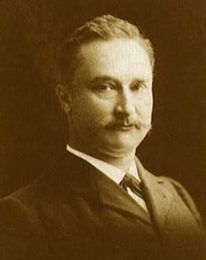(单词翻译:单击)
Many people refused to accept that the Neandertal bones were ancient at all. August Mayer, a professor at the University of Bonn and a man of influence, insisted that the bones were merely those of a Mongolian Cossack soldier who had been wounded while fighting in Germany in 1814 and had crawled into the cave to die. Hearing of this, T. H. Huxley in England drily observed how remarkable it was that the soldier, though mortally wounded, had climbed sixty feet up a cliff, divested himself of his clothing and personal effects, sealed the cave opening, and buried himself under two feet of soil. Another anthropologist, puzzling over the Neandertal's heavy brow ridge, suggested that it was the result of long-term frowning arising from a poorly healed forearm fracture. (In their eagerness to reject the idea of earlier humans, authorities were often willing to embrace the most singular possibilities. At about the time that Dubois was setting out for Sumatra, a skeleton found in Perigueux was confidently declared to be that of an Eskimo. Quite what an ancient Eskimo was doing in southwest France was never comfortably explained. It was actually an early Cro-Magnon.)
有许多人拒绝承认尼安德特人骸骨是古人类的化石。波恩大学有影响的教授奥古斯特·梅耶认为,这些骸骨不过是一名蒙古哥萨克士兵死后留下的。他1814年在德国作战中受了伤,最后爬到洞穴中死去。听到这种说法,英国的T.H.赫胥黎不无嘲讽地说,那位士兵真是了不得,尽管已经受了重伤,还爬到将近20米高的悬崖,然后脱去身上的衣服,扔掉所有的私人物品,最后封上洞口,将自己埋在半米多深的土里。另一个人类学家对尼安德特人的大眉脊作了深入研究,认为这是由于前臂骨折而又没有完全痊愈而长时间皱着眉头的结果(在迫不及待地否定有关早期人类的观点的同时,权威人士经常对极不可能的事倒是不假思索地加以接受。就在杜布瓦出发去苏门答腊前后,有人在佩里格发现了一副骸骨;它被很有把握地宣布为爱斯基摩人的化石。至于一个古代的爱斯基摩人在法国西南部干什么,一直没有一个像样的解释。实际上这是一个早期的克罗马农人。)

弗朗索瓦·托马斯·杜布瓦
It was against this background that Dubois began his search for ancient human bones. He did no digging himself, but instead used fifty convicts lent by the Dutch authorities. For a year they worked on Sumatra, then transferred to Java. And there in 1891, Dubois—or rather his team, for Dubois himself seldom visited the sites—found a section of ancient human cranium now known as the Trinil skullcap. Though only part of a skull, it showed that the owner had had distinctly nonhuman features but a much larger brain than any ape. Dubois called it Anthropithecus erectus (later changed for technical reasons to Pithecanthropus erectus) and declared it the missing link between apes and humans. It quickly became popularized as "Java Man." Today we know it as Homo erectus.
正是在这样的背景之下,杜布瓦开始了他寻找古人类化石的工作。不过他并非亲自动手挖掘,而是使用荷兰当局借来的50名犯人。他们先是在苏门答腊工作了一年,之后又转战爪哇。1891年,正是在那里,杜布瓦——应该说是他的挖掘队,因为杜布瓦本人很少去现场——发现了一小块古人类头盖骨化石,这块化石现在被称为特里尼尔头盖骨化石。尽管这只是一块不完整的头盖骨化石,可是它足以显示化石的主人并没有明显的人类特征,但是有着比任何类人猿大许多的大脑。杜布瓦称他为直立(后来因技术原因改称为直立猿人),并且宣称这是联结猿和人类之间的缺环。没过多久,大家就称他为爪哇人。今天我们称他为直立人。


